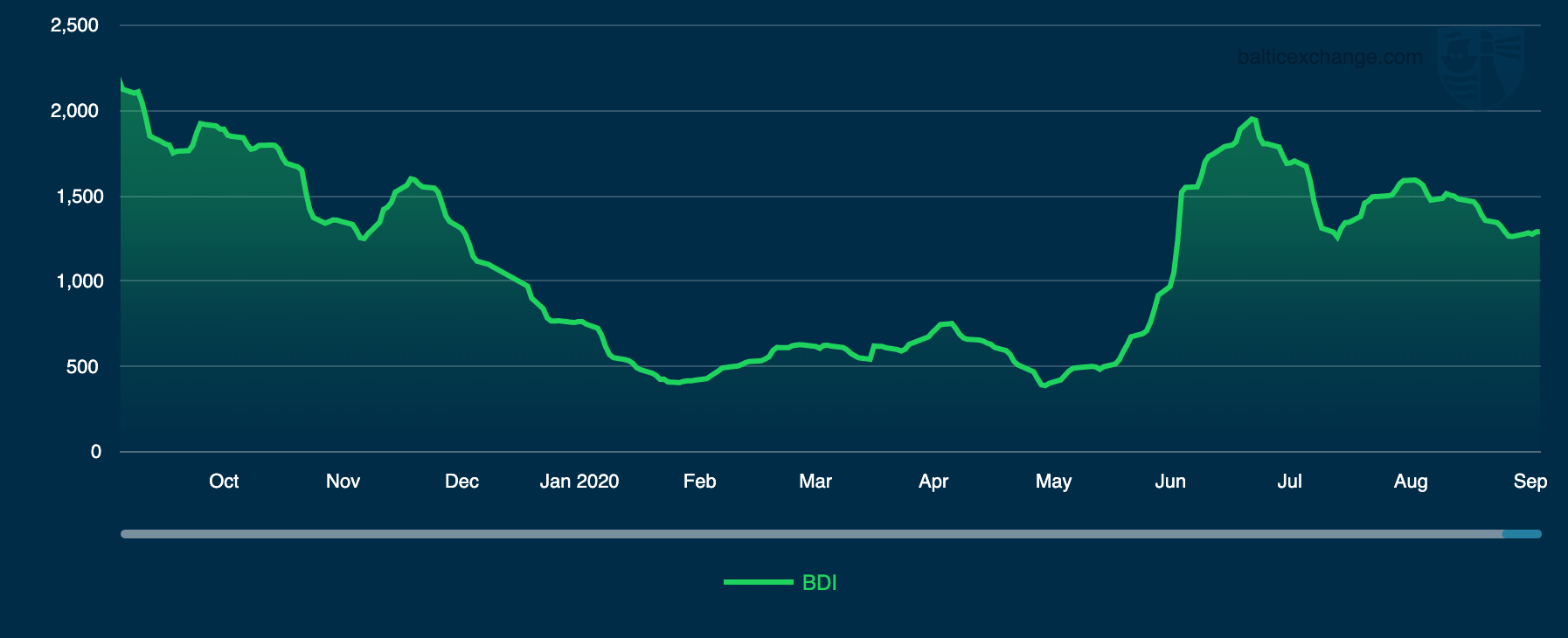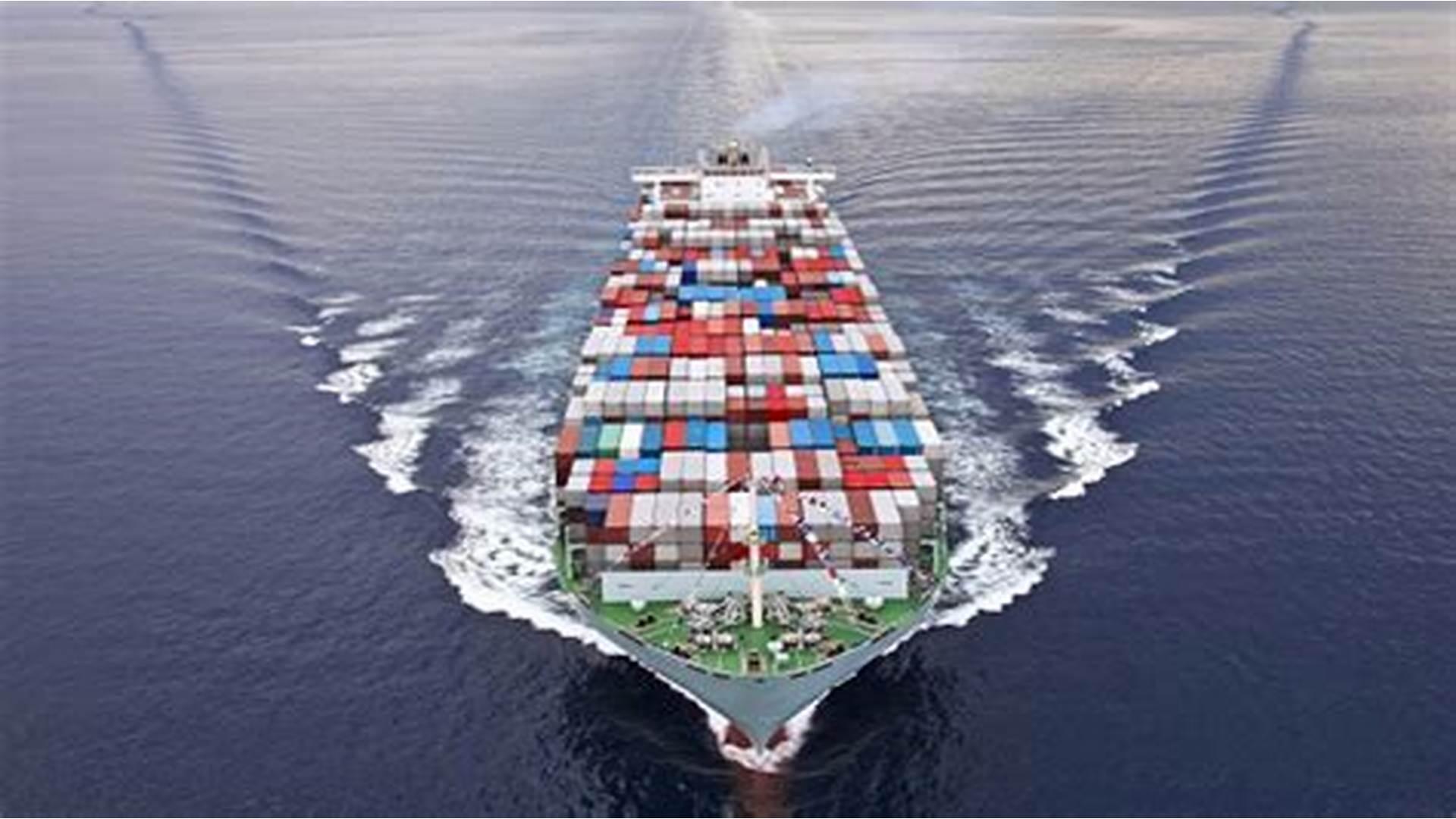BEIJING, Sept. 21 (Xinhua) -- The Baltic Exchange has published its weekly report of the dry and tanker markets for September 14-18, 2020 as below:
Capesize
It was all heavy swell for the Capesize market this week as rate levels swung with no clear direction. The Capesize 5TC opened the week at $15,248 to close at $15,761. The Pacific basin was seen to gain traction throughout the beginning of the week, supplying positive sentiment into other parts of the market before it fell away mid-week as charterers took the upper hand. It was a short-lived drop as the Pacific steadied itself by weeks end. West Australia to China C5 settled Friday at $7.082. The Brazil to China C3 fed off the early positive sentiment to be very active this week fixing tonnage for laycans throughout October. The route closed with a week on week increase of 69 cents to settle at $16.295. The North Atlantic was largely inactive before a stronger fixture was heard, which helped to lift spirits in the region. It still remains thinly traded and unconvincing. The market, now largely trading laycans for Q4, remains largely rudderless and susceptible to bursts of trading activity. Cargo levels out of Brazil are said to be healthy with solid projections for the remainder of the year and iron prices still well above the $100 level. Yet there still seems no clear path for the market to have a traditional Q4 rally - yet.
Panamax
It proved to be a flat week in the Panamax market with the Panamax 5TC average gaining $87 to end the week at $11,835. In the Atlantic and North Sea region there appeared to be a mid-week clear out of spot positions leading to a small rise in sentiment as some of the Baltic round trips found an improved level with $10,500 getting achieved on an 81,000dwt. But this was pegged back a little by end week with some cheaper fixtures. Rumoured private fixing ex EC South America failed to deliver any significant rise and the early arrival dates appeared under pressure. In Asia it was a tale of a two-tier market with the north region proving to be solid during the week as several NoPac round trips were concluded, the highlight being $13,000 on an 82,000dwt delivery North China. Further south cargo flow was slow - particularly ex Indonesia - and rates consequently eased.
Supramax/ Ultramax
As the week progressed the BSI gained momentum, helped by strong rates being seen from Asia due to a lack of prompt tonnage. The Atlantic was rather lacklustre, with some areas seeing stronger demand such as the Continent, where a 55,000dwt fixed at $16,500 delivery Continent via Baltic to the east Mediterranean. Whilst from east coast South America it remained rather flat, a 60,000dwt fixing a trip to the Far East at $14,500 plus $450,000 ballast bonus. Limited period activity surfaced with a standoff between expectations from owners and charterers. In Asia, there was an increase in demand for Indonesia/India coal, where a 60,000dwt open Manila fixed in the mid $12,000’s via Indonesia redelivery west coast India. A 53,000dwt open Hong Kong was fixed for two laden legs redelivery Singapore-Japan at $11,000. A little more activity from the Indian Ocean, a 63,000dwt fixing delivery Richards Bay for a trip to Sri Lanka at $12,300 plus $230,000 ballast bonus.
Handysize
There were ups and downs for both time charter average and BHSI throughout the week with consistent support from the East. The Continent/Mediterranean market remained in negative territory whilst in the US Gulf and east coast South America levels appeared to be on the rise towards the end of the week. A 32,000dwt was fixed from the US Gulf for a transatlantic trip at $10,000. Inter US Gulf was reported at $11,000 on a small sized vessel. A 35,000dwt fixed delivery east coast South America for a trip to Norway in the $13,000/$14,000 region. In the Pacific, a 1994 built 43,000dwt was fixed basis passing Busan for a trip via Vanino to South Korea at $7,750. Same level was fixed on a 33,000dwt delivery mid China for an Indonesia round voyage, whilst a 38,000dwt open CJK was fixed for a trip to Japan at low $6,000s.
Clean
In almost all areas, owners have been faced with falling markets. In the 75,000mt Middle East Gulf/Japan trade, rates are down around five points, sitting now close to WS70. While in the LR1 trade, the market for 55,000mt to Japan has fallen 7.5 points to WS65.
A week ago, the market for 37,000mt UKC/USAC stood at close to WS112.5. Whereas today owners are looking at rates of barely WS90 and a run to Tema only paid WS105. The situation is not helped by the number of ballasters from USA where the 38,000mt backhaul trade to UK-Continent is hovering at a paltry WS60 - down 2.5 points from the start of the week. For a trip to Brazil rates have eased further with the market here now hovering just above WS82.5, in contrast to the WS93.75 at the start of the week. The 30,000mt clean cross-Med trade has come under relentless downward pressure and is now in the very low WS130s, representing a drop of just over 20 points. Brokers feel there is potential for further softening here.
VLCC
Another lacklustre week has seen a slight downturn in rates for most of the routes. The Middle East market has seen rates drop two to three points as 270,000mt AG/China is now W35, while 280,000mt to USG via the cape/cape routing is assessed at a shade under WS19. In the Atlantic region 260,000mt West Africa to China voyages saw rates dip to WS38. Meanwhile, for 270,000mt US Gulf/China rates improved by just over $100k to $4.93m as a Chinese charterer is reported to have paid $5m for a trip loading from St Croix.
Suezmax
Rates for 135,000mt Black Sea/Med again saw a very slight weakening of about a point to WS46.5. For the 130,000mt West Africa/UKContinent market shifted 2.5 points down at WS35, as a major oil company had an owner of a 16-year-old vessel agree to this level and the position list remaining over-populated. The 140,000mt Middle East Gulf to Med market took another hit this week with rates being assessed 1.5 points down at WS15.5. ENI were reported to have taken a ship at WS14.75, demonstrating the market weakness here.
Aframax
In the Mediterranean market, the 80,000mt Ceyhan/Med trade saw rates pushed down 2.5 points to WS57.5. In Northern Europe, the market for 80,000mt Cross-North Sea had a weaker feel to it with rates assessed between WS72.5-75, marginally down from last week. Meanwhile 100,000mt Baltic/UKC market lost a couple of points to just under WS40. On the other side of the Atlantic rates for 70,000mt Carib/USGulf remained static at WS55. It was a similar story on 70,000mt USG/UKC where rates remained at WS50.
Headquartered in London and a subsidiary of the Singapore Exchange (SGX), the Baltic Exchange publishes a range of indices and assessments which provide an accurate and independent benchmark of the cost of transporting commodities and goods by sea. These include the Baltic Dry Index (BDI), the dry bulk shipping industry's best known indicator. Published daily since 1985, this provides a snapshot of the daily spot market earnings of capesize, panamax and supramax vessel types on the world's key trading routes.

Chart shows Baltic Dry Index (BDI) during Sept.19, 2019 to Sept.18, 2020
In March 2018 the BDI was re-weighted and is published using the following ratios of timecharter assessments: 40 percent capesize, 30 percent panamax and 30 percent supramax. The information is provided by a panel of international shipbrokers.
(Source: The Baltic Exchange, edited by Niu Huizhe with Xinhua Silk Road, niuhuizhe@xinhua.org)




 A single purchase
A single purchase









